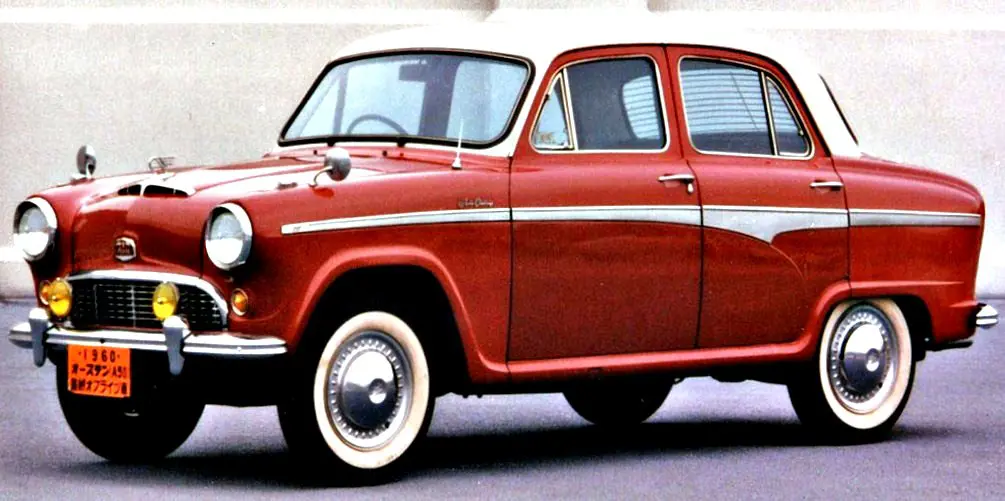THE NISSAN AUSTINS – A CELEBRATION
03 November 2022
Just over 70 years ago, the Japanese Ministry of International Trade and Industry told the press that representatives from Austin were in Tokyo to discuss the local assembly of their cars. The result of these negotiations was one of the most intriguing chapters in the history of the British motor industry.
After the Second World War, the US occupying authorities restricted the building of passenger cars until October 1949. By 1951 the company's president Genshichi Asahara decided that the solution was to build a car under licence. By June of the following year, the Japanese government stipulated that overseas firms could only enter the domestic car market via agreements with existing local chassis makers.

Furthermore, small European models were preferable to large American vehicles, and domestically manufactured components should ultimately replace imported parts. Nissan selected Austin as a partner due to its reputation for building small cars and its presence in the US export market. In addition, by March 1952, Longbridge had already sold 1,288 vehicles in Japan and owners were impressed with its engineering and suitability to road conditions. The two companies signed a ‘technical cooperation’ agreement on the 4th December 1952 and 2,000 CKD kits of the A40 Somerset were to be sent from the UK- Nissan was unable to export Japanese-built Somersets without the written permission of the Austin Motor Export Corporation. In terms of royalties, no payment was due in the first year of production, and in the second year, they were 2 per cent of the retail price, with a minimum amount of £10,000. By the third year, this increased to 31-2 per cent with a minimum of £20,000. This was to rise to 5 per cent with a minimum of £30,000 in the fourth and subsequent years.
Austin proclaimed they were "the first British motor company to announce plans for the active development of the Japanese market". Longbridge further provided technical support and seconded the production engineers Herbert Bailey and Brian Bayliss to Japan. In turn, Nissan dispatched several technical experts to the UK. The first Japanese-built Somerset left the production line at the Yokohoma Plant No. 3 on the 6th April 1953, and on the 8th May, the British Ambassador attended its launch.
However, a four-month strike nearly put the concern out of business, but in December 1954 the first Nissan-built A50 Cambridge departed the plant. Three months later, it replaced the locally built Somerset, reaching an important milestone in September 1956, when they were produced rather than assembled.
Nissan had achieved this goal ahead of schedule and made a rather attractive 5-door estate version with no direct UK equivalent. Dick Williams, Austin's Export Sales Representative for the Far East, noted they were "far superior to the original Longbridge build". Sales continued until 1959 when Nissan had made a total of 20,855 Austins. Nine years earlier, they made just 865 cars and the Somerset and Cambridge were crucial in their growth.
